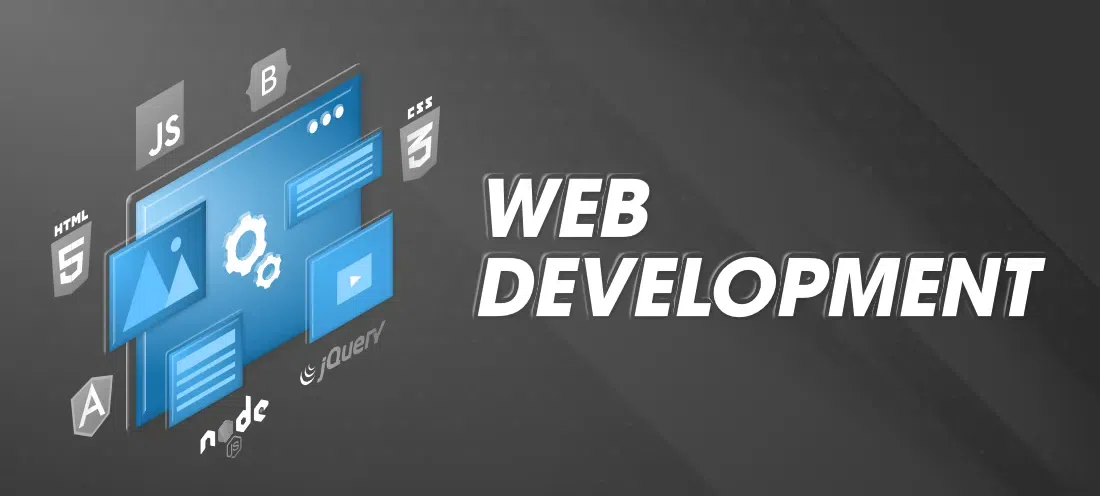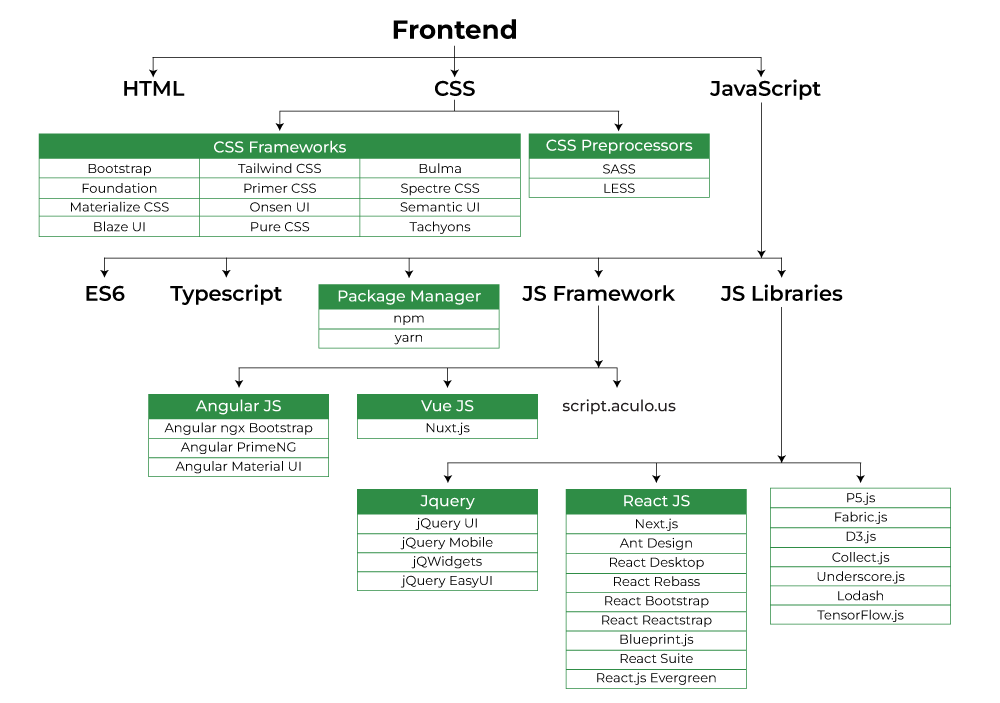
Web Development
The creation, construction, and upkeep of websites are referred to as web development. It covers topics like database administration, web development, web design, and web publishing. It is the development of an online application, such as a website.

The word Web Development is made up of two words, that is:
- Web: It refers to websites, web pages or anything that works over the internet.
- Development: It refers to building the application from scratch.
Web Development can be classified into two ways:
Frontend Development
The part of a website where the user interacts directly is termed as front end. It is also referred to as the ‘client side’ of the application.
Frontend Roadmap

Popular Frontend Technologies
- HTML: HTML stands for HyperText Markup Language. It is used to design the front end portion of web pages using markup language. It acts as a skeleton for a website since it is used to make the structure of a website.
- CSS: Cascading Style Sheets fondly referred to as CSS is a simply designed language intended to simplify the process of making web pages presentable. It is used to style our website.
- JavaScript: JavaScript is a scripting language used to provide a dynamic behavior to our website.
- Bootstrap: Bootstrap is a free and open-source tool collection for creating responsive websites and web applications. It is the most popular CSS framework for developing responsive, mobile-first websites. Nowadays, the websites are perfect for all browsers (IE, Firefox, and Chrome) and for all sizes of screens (Desktop, Tablets, Phablets, and Phones).
Frontend Libraries and Frameworks
Backend Development
The server side of a website is called the backend.Users are unable to view and interact with this portion of the website. It’s the part of the program that doesn’t interact with users directly. Data is arranged and stored using it.
Backend Roadmap

Popular Backend Technologies
- PHP: PHP is a server-side scripting language designed specifically for web development.
- Java: Java is one of the most popular and widely used programming languages. It is highly scalable.
- Python: Python is a programming language that lets you work quickly and integrate systems more efficiently.
- Node.js: Node.js is an open source and cross-platform runtime environment for executing JavaScript code outside a browser.
Back End Frameworks and Technology
Database:
- Relation Database
- NoSql Database
Databases
A structured collection of data that is electronically stored and accessible through a web application is known as a database in web technology. It functions as the backend element that stores, manages, and retrieves data. Relational databases, such as MySQL and PostgreSQL, use structured tables and SQL for queries, while non-relational databases, such as MongoDB and CouchDB, store data in a variety of flexible, document-oriented forms. By offering effective storage, retrieval, and manipulation capabilities, they let web applications manage dynamic content, user data, transactions, and more. To communicate with the database and guarantee data security, performance, and integrity, database management systems (DBMS) are utilized.
Relational Database
A relational database stores data in tables, similar to a spreadsheet, where each table has rows and columns. The rows hold individual records, and the columns define the data attributes. Tables can be linked to each other through special keys, allowing related data to be connected.
- Postgre SQL: PostgreSQL is a powerful, open-source relational database that supports advanced SQL features and complex queries. It handles structured data, ensures ACID compliance, and is known for its reliability and extensibility.
- MariaDB: MariaDB is an open-source relational database that evolved from MySQL, offering improved performance, security, and features. It supports SQL queries, ACID compliance, and is highly compatible with MySQL.
- MySQL: MySQL is an open-source relational database management system that uses SQL for managing structured data. It’s known for its reliability, ease of use, and performance, widely used in web applications.
NoSql Database
Unlike conventional relational databases, NoSQL databases store data in a flexible, non-tabular fashion. NoSQL databases may store data in documents, key-value pairs, wide-columns, or graphs rather than tables with rows and columns. This enables them to effectively manage substantial volumes of unstructured or semi-structured data. They are made to handle large data applications and scale with ease.
- Mongodb: MongoDB is a NoSQL database storing data in JSON-like documents. It handles unstructured data, supports powerful queries, and scales easily across servers, making it popular for flexible, scalable applications.
- Cassandra: Apache Cassandra is an open-source NoSQL database that is used for handling big data. It has the capability to handle structure, semi-structured, and unstructured data.
- Redis: Redis is an in-memory NoSQL database known for its speed. It supports various data structures like strings, hashes, and lists, making it ideal for caching, real-time analytics, and messaging.


Leave a Reply